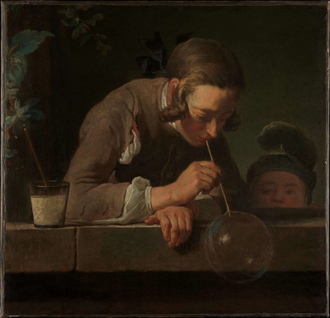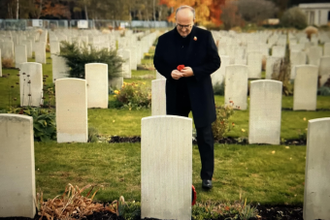Gospel in Art: The Parable of the Dishonest Steward

Soap Bubbles by Jean-Baptiste-Siméon Chardin 1733-34 © Metropolitan Museum of Art, New York
Source: Christian Art
Gospel of 7 November 2025
Luke 16:1-8
At that time: Jesus said to the disciples, 'There was a rich man who had a manager, and charges were brought to him that this man was wasting his possessions. And he called him and said to him, "What is this that I hear about you? Turn in the account of your management, for you can no longer be manager." And the manager said to himself, "What shall I do, since my master is taking the management away from me? I am not strong enough to dig, and I am ashamed to beg. I have decided what to do, so that when I am removed from management, people may receive me into their houses." So, summoning his master's debtors one by one, he said to the first, "How much do you owe my master?" He said, "A hundred measures of oil." He said to him, "Take your bill, and sit down quickly and write fifty." Then he said to another, "And how much do you owe?" He said, "A hundred measures of wheat." He said to him, "Take your bill and write eighty." The master commended the dishonest manager for his shrewdness. For the sons of this world are more shrewd in dealing with their own generation than the sons of light.'
Reflection on the painting
Not all the characters in Jesus' parables are models of goodness and virtue. Many are deeply flawed, yet often there is something redeeming in them. The younger son in the parable of the prodigal son is one such example: reckless and selfish, yet when his life fell apart, he came to his senses, admitted his mistakes, and returned home in humility. The character in today's Gospel, the dishonest steward, shares something of that same complexity. He had been wasteful with his master's property, perhaps even skimming off a portion for himself. But when faced with losing everything, he acted cleverly and, for once, thought of others. By reducing the debts owed to his master, he may well have given up his own profit, hoping to earn goodwill and friendship in his time of need.
In that surprising turn, Jesus sees something worth noticing. The steward's behaviour isn't held up as moral, but as shrewd and practical. It is a reminder that even flawed people can act well and decisively when the moment demands it. Jesus uses this story to invite us to reflect on how we respond when life unsettles us. Every crisis, he suggests, is a chance to rediscover what is best ... not just FOR us... but IN us. Like the steward, we are called to turn moments of loss into opportunities for growth, and to let what is good within us come to the surface when it matters most. That image of goodness bubbling to the surface is a lovely way to think about our souls. Just as bubbles naturally rise through water and catch the light, so the goodness within us should keep rising to the surface of our lives. It may sometimes be pushed down by fear, pride, or selfishness, but it never disappears; it is always there, waiting to come up again.
I know our painting doesn't quite show bubbles rising in water (it depicts a simple soap bubble instead) but it has always charmed me and that's why I wanted to share it with you. Soap Bubbles by Jean Siméon Chardin, painted in 1733, depicts a young man leaning over a window ledge, blowing a large iridescent bubble from a thin straw dipped in a glass of soapy water. Behind him, a child peers over the ledge, watching silently. The light catches the surface of the bubble so delicately that it seems almost suspended in time. It is so lovely to think that children back then were already so fascinated with blowing buddies.
Also, the bubble in this painting becomes more than a pastime for the artist. He invites us to pause and reflect on the fragile beauty of life. In earlier genre painting, such a motif often pointed to vanitas-the fleeting nature of the world-but Chardin shifts it into the everyday moment, making us feel the wonder of something ordinary. The young man's concentration, the child's curiosity, and the soft light all combine to draw us into a contemplative space. It's a reminder that even in our daily routines, there is always something worthy of wonder.
LINKS
Gospel in Art: https://christian.art/
Today's Reflection: https://christian.art/daily-gospel-reading/luke-16-1-8-2025/
and
Video: The Art of Remembrance - From The Monuments Men to The Last Post: www.indcatholicnews.com/news/53644


















